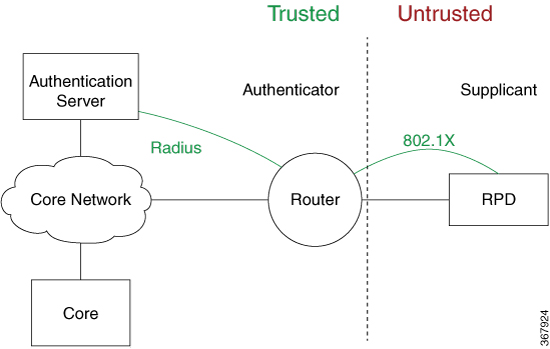Usage guidelines and restrictions for 802.1X port-based authentication
Consider these restrictions and usage guidelines when implementing 802.1X port-based authentication on the Cisco 8000 platform:
Port authentication
-
802.1X port authentication must be configured on physical ports.
-
Supported modes for 802.1X port-based authentication:
-
Single-host
-
Multi-auth
-
VLAN sub-interfaces
-
VLAN sub-interfaces must have pre-configured VLAN IDs.
-
All VLAN-tagged traffic is dropped until successful 802.1X authentication of the port.
-
No default VLAN assignment is provided for unauthenticated MAC addresses.
-
Authenticated MAC addresses are validated at the main port, independent of VLAN assignment.
-
VLAN-tagged traffic is allowed only for authenticated MAC addresses.
Untagged traffic
-
Untagged EAPOL traffic is always admitted and sent to the host CPU regardless of port authentication status.
-
All other untagged traffic is dropped until successful 802.1X authentication of the port.
-
Untagged traffic is allowed only for authenticated MAC addresses.
-
No default VLAN assignment is provided for untagged traffic by the port.


 Feedback
Feedback